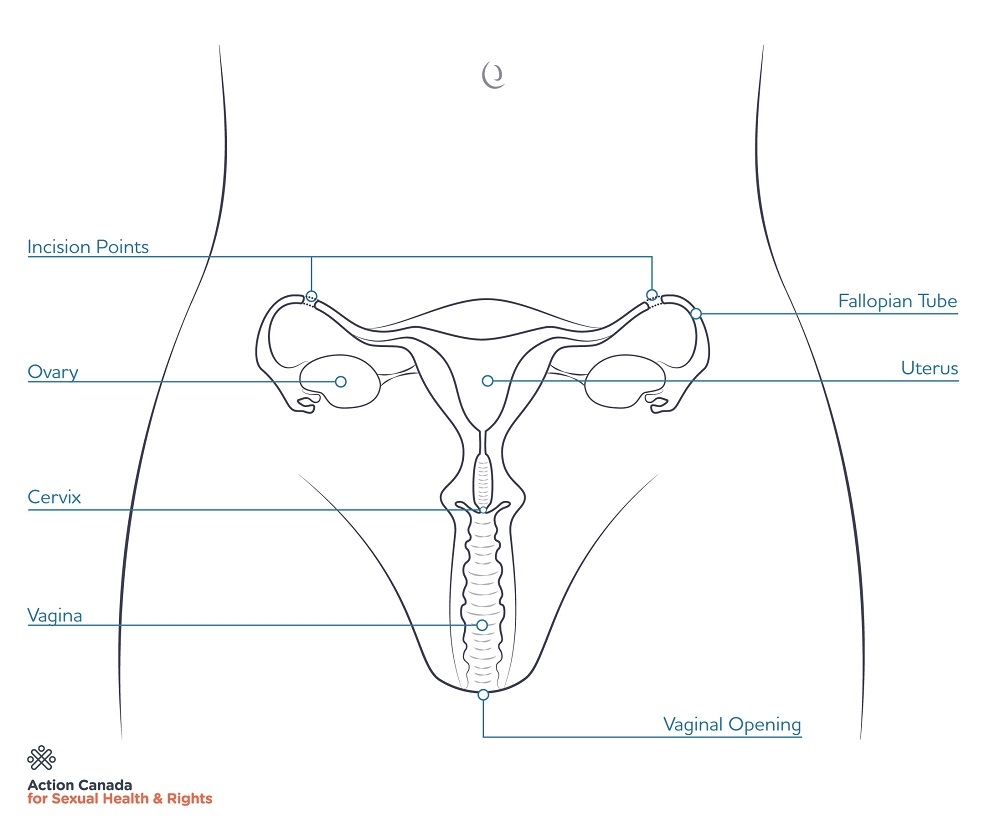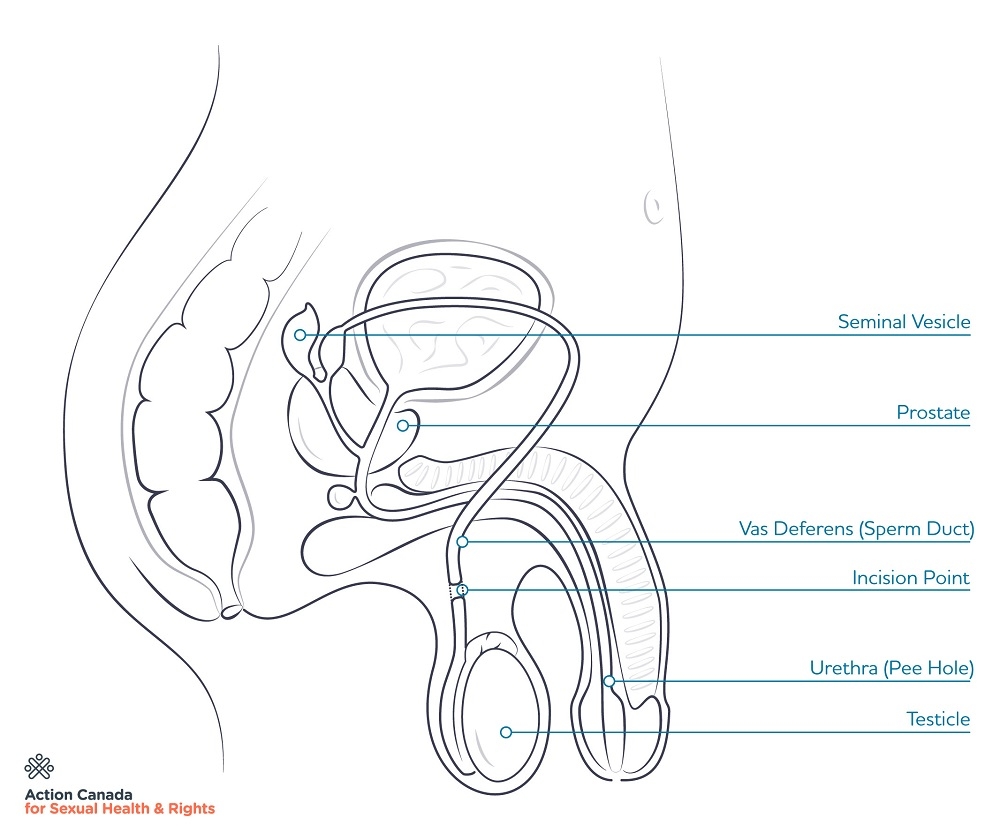
Permanent birth control methods, sometimes called sterilization, are small surgical procedures that end a person’s ability to cause a pregnancy or get pregnant. Tubal ligation for people who can get pregnant, and involves cutting or blocking the fallopian tubes. Vasectomy is for people who produce sperm, and involves blocking or closing the vas deferens.
Tubal Ligation
Tubal ligation is a permanent surgical procedure where a doctor blocks, removes, or closes the fallopian tubes of a person who can get pregnant. It prevents pregnancy by preventing sperm and eggs from meeting in the fallopian tubes. The surgery is usually done by laparoscopy (where instruments are inserted through incisions smaller than 1 cm) or during a different surgery, like a cesarean section birth. Depending on the method, it might involve general anesthetic (being unconscious), or a local or spinal anesthetic (epidural, while being awake).
Things to consider
- Once it is done, you don’t have to do anything to make it work.
- It allows the person who can get pregnant to be fully in control of birth control.
- It is not reversible.
- You may have side effects or, rarely, complications from surgery.
- You need a referral to a gynecologist who will do the procedure.
- It does not reduce the chance of getting or passing STIs.
Effectiveness
Tubal ligation is 99.5% effective. Because you do not need to do anything to make it work once it is done, perfect use and typical use are the same.
Diagram

Vasectomy
A vasectomy is a minor surgical procedure where a doctor blocks or closes the vas deferens (the tubes that carry the sperm away from the testicles*) of a person who produces sperm. It prevents pregnancy by preventing sperm from getting into the vagina* of a person who can get pregnant. It’s done in a doctor’s office under a local anesthetic, meaning the area being worked on is numbed but you are awake for the procedure. It takes approximately 20 minutes to complete.
Things to consider
- Once it is done, you don’t have to do anything to make it work.
- It allows a person who produces sperm to take responsibility for birth control.
- It’s usually considered to be permanent. Although it can be reversed in some cases, reversal can be difficult and expensive and is not guaranteed.
- It does not cause hormonal side effects.
- You may have side effects or, rarely, complications from surgery.
- You may need a referral to a urologist to get a vasectomy, or some specialised clinics provide vasectomies without referrals.
- It does not reduce the chance of getting or passing STIs.
Effectiveness
A vasectomy is 99.9% effective. Because you do not need to do anything to make it work once it is done, perfect use and typical use are the same.
Diagram

* Not everyone uses these words for their body parts or relates to them in the same way. We have used these words as they are commonly known and encourage you to use the language that feels best for you.


